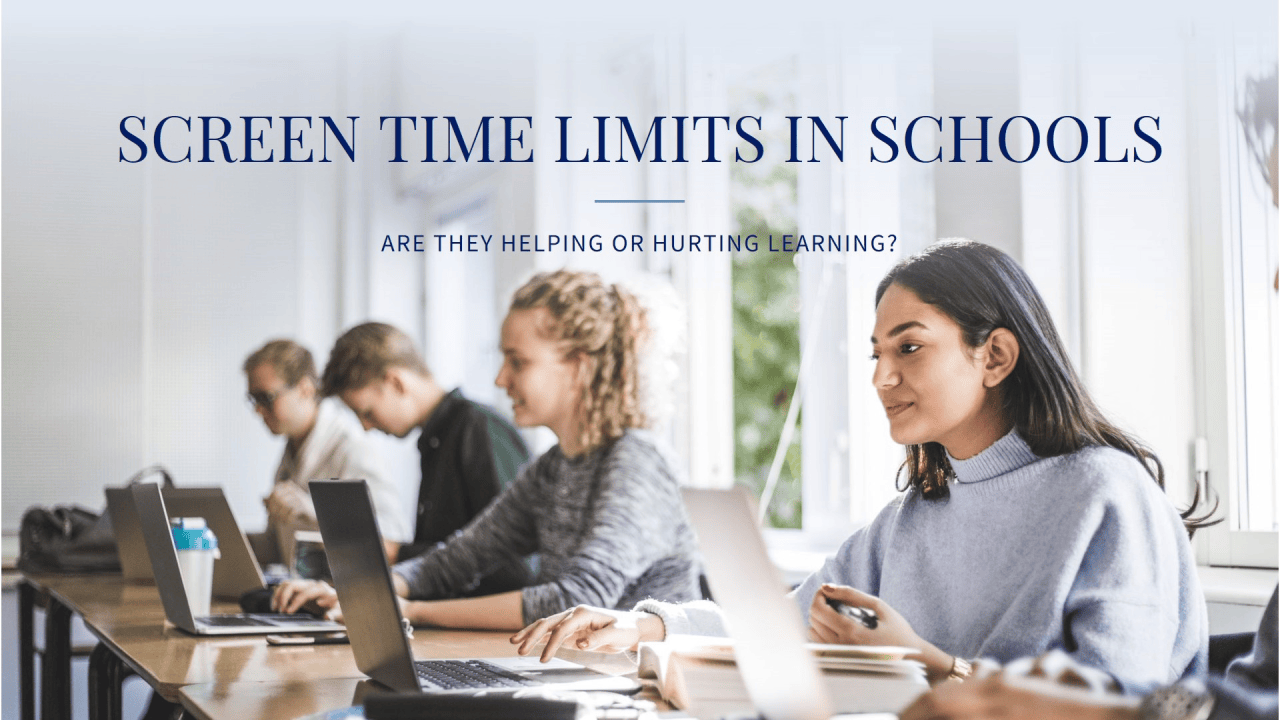
We’ve all heard the warnings: excessive screen time is detrimental to young minds, eroding attention spans and hindering deep learning. Schools, understandably, have responded with stricter limits on device use, aiming to reclaim focus and improve study habits. But what if, in our well-intentioned efforts, we're missing the bigger picture? What if limiting screen time is not the solution, but part of the problem?
The Well-Intentioned, Yet Flawed Approach:
Walk into any school administrator's office, and you'll likely hear concerns about dwindling attention spans and the allure of digital distractions. The logic is simple: screens = distraction = less learning. This has fueled policies minimizing tech both in & out of classrooms, based on a desire to foster deeper engagement and better learning habits. We see headlines citing research on the cognitive issues, emotional dysregulation, and mental health problems [1, 2, 3] linked to excessive screen time, and it’s easy to conclude that less is always more.
The Flaw in the Logic: Ignoring How Students Actually Learn
A More Engaging Path: Leverage Short-Form Video and Interactive AI
A More Engaging Path: Leverage Short-Form Video and Interactive AI
The Power of AI-Powered, Video-Enhanced Learning:
This approach offers a multitude of benefits, backed by research:
- Increased Engagement: Video and conversational AI tap into digital natives' preferences, making learning relevant and engaging. Research indicates 61% of digital natives favor tech in courses [4].
- Personalized Pace & Improved Outcomes: AI tutors offer personalized learning, adapting to individual styles and pacing [7], and personalized learning is consistently linked to improved student achievement [9].
- Deeper Understanding & Active Learning: Interactive AI prompts students to articulate understanding, fostering critical thinking and better knowledge retention. AI promotes active learning, manages information overload, and provides timely feedback [7].
- Future-Ready Skills: Integrating AI prepares students for an AI-driven world, building essential digital literacy and comfort with these tools. Proficiency in AI tools is becoming a necessity for job security in the modern workforce [10].
Time for a New Reality in Education:
Time for a New Reality in Education:
Limiting screen time in schools, while well-intentioned, may be a misguided battle. The real challenge isn't to banish screens, but to strategically harness their power to make learning more engaging, personalized, and effective. It’s time for a reality check: let’s move beyond outdated restrictions and embrace innovative, tech-driven solutions that actually resonate with how students learn today.
What are your thoughts? Is it time to rethink screen time policies and explore the potential of video and AI to revolutionize education? Share your perspectives in the comments below and let’s discuss how we can build a more engaging and effective future for learning. To learn more about how we're bringing this vision to life and to experience the future of learning yourself, visit our website: education.advantageintegrationai.com.
Citations:
1: National Institutes of Health 2: EdTech Magazine 3: National Institutes of Health 4: International Institute of Informatics and Systemics 5: AERA Meta-analysis, 2021 6: AXD Agency, 2024 7: Harvard Study 8: Forbes 9: Nord Anglia Education 10: Stand Together
#AI #EdTech #AIinEducation #FutureofLearning #PersonalizedLearning #DigitalLearning


